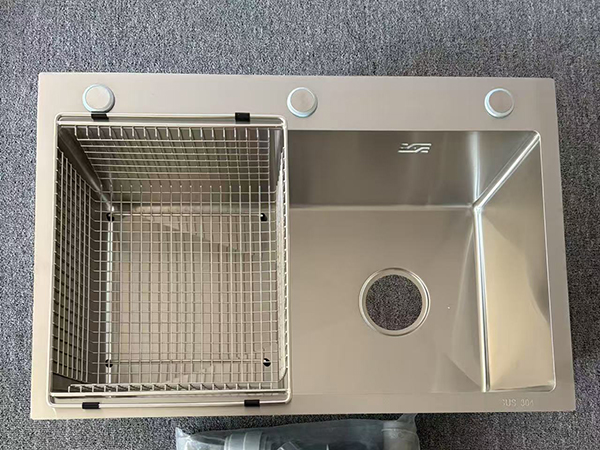
Single Bowl Kitchen Sink
The depth of the Single Bowl Kitchen Sink has an impact on the convenience of use, splash proof effect, and space utilization. The following is a specific analysis:
effect
Splash proof effect: A deeper sink can effectively prevent water from splashing onto the countertop during use. For example, when cleaning large cookware or performing strong rinsing, the impact of water is strong, and shallow water tanks are prone to splashing water, while deep water tanks can provide enough space to accommodate the splashing water and keep the kitchen countertop dry.
Convenience of use: A sink with a suitable depth allows users to have enough space for their arms to move when cleaning items, without frequently touching the edge of the sink due to its shallow depth, thereby improving the comfort of use. Moreover, a deep sink can better accommodate large pots and utensils, allowing them to be completely submerged in water for easy cleaning.
Space utilization: A deep sink can relatively accommodate more items, and for situations where kitchen space is limited, it can better utilize the space below the sink for storage. But if the sink is too deep, it may make it inconvenient to access items, requiring bending over or reaching deeper.
Noise control: Deep water tanks can reduce the noise generated by water flow hitting the bottom of the tank to a certain extent. Due to the long distance that water falls in a deep water tank, there will be a certain amount of energy consumption during the falling process, thereby reducing the generation of noise.
Appropriate depth
Generally speaking, a depth of 18-25 centimeters is more suitable for a single slot stainless steel sink. For small-sized kitchens or situations where daily usage frequency is not high, a sink with a depth of 18-20 centimeters can meet basic needs, ensuring a certain splash proof effect without occupying too much space.
For households that frequently engage in extensive cooking and cleaning work, a sink with a depth of 22-25 centimeters is more practical, as it can better adapt to various cleaning needs, reduce the possibility of water splashing, and provide more ample space.
In addition, the selection of sink depth should also consider factors such as the height of the user and the height of the kitchen countertop. If the user is tall or the kitchen countertop is low, increasing the depth of the sink appropriately can improve the comfort of use.
How to choose a sink suitable for your kitchen?
Choosing a sink that suits your kitchen requires comprehensive consideration of multiple fa ...
2025-05-12
Possible issues that may arise during the use and installation of kitchen sinks
There may be various problems during the use and installation of kitchen sinks, and the fol ...
2025-05-12
How to choose a suitable stainless steel sink
A good stainless steel sink uses thicker plates,and the thickness can be determined by slig ...
2025-04-10
How to choose a kitchen sink
Stainless steel:It has the advantages of strong corrosion resistance,not easy to rust,easy ...
2025-04-10


